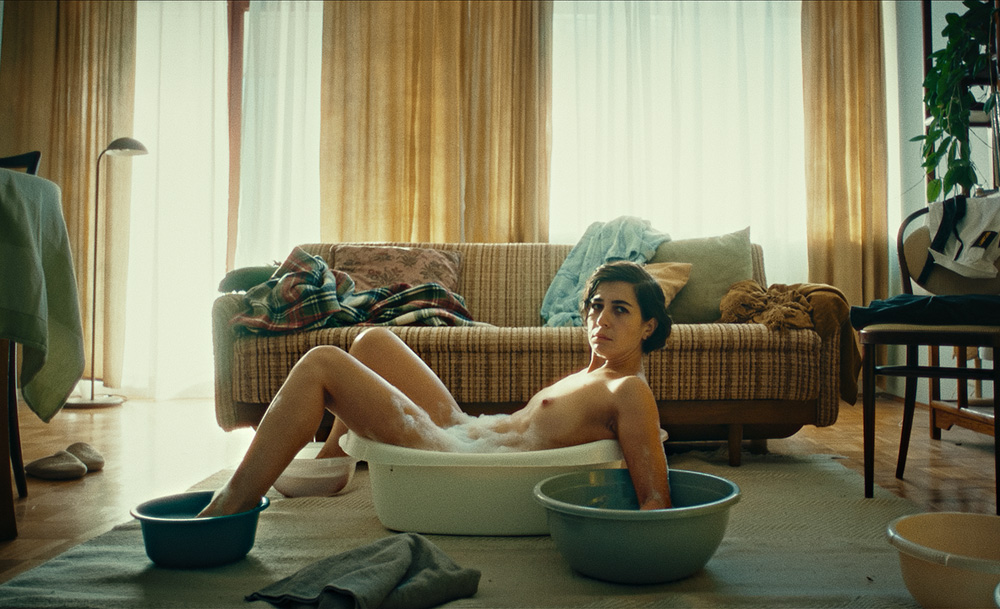Anna (Ioana Iacob) may use only a magnetic wand for her security checks at the St. Phoebus Home in “We Might As Well Be Dead,” but her questions of anyone wanting to enter are more invasive than a cavity search. Obliged to ask whether those entering have had suicidal thoughts recently or evicted from a place of previous residence for immoral activity, she is the first and last line of defense against what’s imagined as a cruel world outside the gates of the relatively modest apartment complex where new applicants will get on their hands and knees, begging to get in.
Anna can be seen giving a tour to such a couple at the start of Natalia Sinelnikova‘s sly dystopian dramedy where a father asks her to think of what she’d want for her own child as she takes a look at his young son and the life he could have if only their application is approved. It’s a less convincing argument in his favor than he might think when Anna indeed has a daughter Iris (Polo Geiger), who refuses to come out of their bathroom because presumably she remains crippled with fear, and while Anna is steadfast in overseeing St. Phoebus with a firm belief in its rules and regulations, her confidence is shaken when one of the complex’s communal dances is interrupted by Mr. Posner (Jörg Schüttauf), unhinged by the disappearance of his beloved dog Willie. How any intruder could come onto the property is a notion that nags on Anna, but so too does the fact that other residents will playfully torment Posner with barking sounds and Posner himself begins to secure signatures to get stronger locks on the doors, upsetting any illusion Anna had of the safe haven she entered into six years prior.
There’s more than a little bit of an Orwellian vibe to “We Might As Well Be Dead,” which doesn’t stray beyond the borders of St. Phoebus, but gets its arms around a world in which fear becomes contagious and blind people to real threats as they chase imaginary ones. Gently surreal with Iris and Anna only communicating between a doggy door in their shared flat and evocative framing of the brutalist architecture all the action takes place in, the film leans on the strong performance of Iacob to engage and the actress gradually lets Anna’s steely professionalism fall away to become far less certain of her surroundings, emotionally letting others in as she’s feeling more and more pushed out. When what societal decay exists on the outside eventually makes its way into St. Phoebus, Sinelnikova and co-writer Viktor Gallandi make shrewd observations about the attraction to nationalism when vague attacks on tradition are met with instant, instinctual aggression rather than reason and the veneer of an enlightened community disappears when everyone comes to the realization that any pride in the refuge they’ve built should be reserved for its physical architecture rather than the seemingly progressive values they hold and can no longer agree upon. Although the notion that the future is here in “We Might as Well Be Dead” is hardly hopeful, at least there’s a silver lining on the horizon when its first-time director can see it all so clearly.
“We Might As Well Be Dead” is available to stream on the Tribeca at Home platform through the end of the festival on June 19th.




